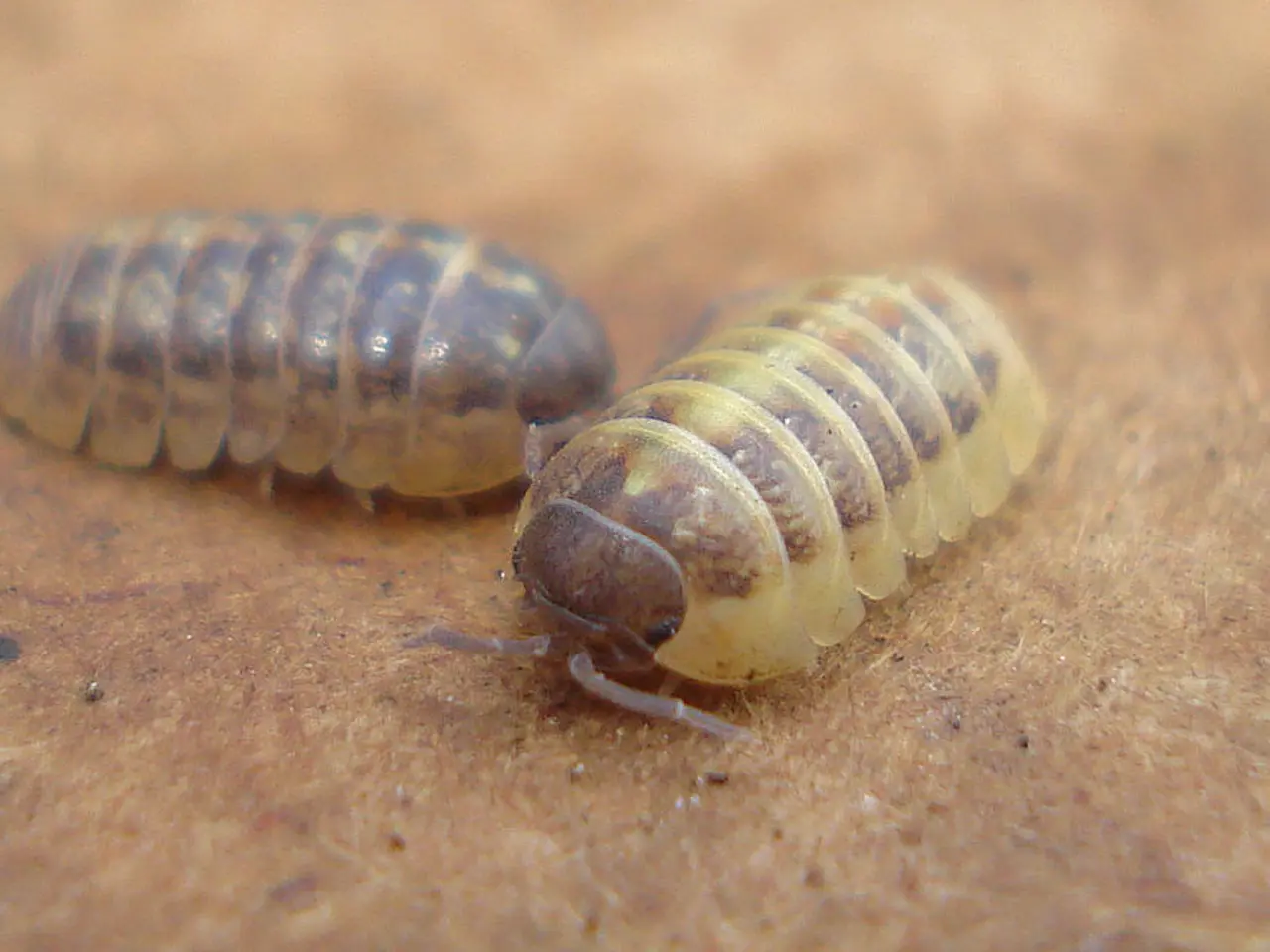Development Underway for a Swarm of Cyborg Insects: Exploring the Positive Aspects
In a groundbreaking development, the field of technology is witnessing a significant leap forward with the creation of cyborg insects. These innovative creations, a blend of biology and technology, are set to revolutionize search and rescue missions.
The outdoor testing of cyborg insects aims to convince stakeholders of their practical value during emergencies. The goal is to validate algorithms under more complex conditions and prove their technical robustness. These insects, equipped with optical and infrared cameras for surveillance, are controlled remotely via an antenna, providing a unique perspective for disaster assessment.
The U.S. defense sector has shown interest in this technology, aiming to attach sensors-equipped "backpacks" to insects for precise directional control. These devices include miniature batteries, optical and infrared cameras, and antennas for remote controlling capabilities. The sensors mounted on the cyborg insects can detect human presence and relay information back swiftly to command centers.
A team led by Hirotaka Sato at Nanyang Technological University has made significant strides in perfecting swarm control algorithms for cyborg insects. The melding of biology with technology signifies a giant leap forward in the field.
Real-World Applications and Benefits
Cyborg insects offer numerous real-world applications and benefits, particularly in search and rescue missions.
- Access to confined and hazardous spaces: Cyborg insects like cockroaches and bees can slip through rubble, walls, or tight spaces in disaster zones where drones or human rescuers cannot safely operate. This allows them to locate survivors or assess structural damage effectively.
- Rapid deployment and scalability: Automated assembly lines using AI-powered robots can equip many insects with electronic "backpacks" quickly and consistently, enabling large-scale deployment crucial for time-sensitive rescue operations.
- Mobility and endurance: Bees, for example, can fly up to five kilometers without rest, making them ideal for exploring vast or remote disaster areas efficiently with minimal energy consumption.
- Multifunctional sensing and communication: These cyborg insects can be equipped with sensors for locating survivors, detecting chemical hazards, or sending real-time information back to rescue teams, thereby supporting critical situational awareness during operations.
- Reduced risk to human responders: Using living insects reduces the risk to human teams who otherwise must enter dangerous environments, such as fire zones, chemical spills, or unstable rubble.
In summary, cyborg insects integrate the natural abilities of insects with robotic control and sensing technologies, offering a highly agile, efficient, and scalable tool for search and rescue missions in disaster zones. They enhance survivor detection and damage assessment capabilities while minimizing human risk.
The Future of Cyborg Insects
The next phase for cyborg insect research involves outdoor testing in simulated disaster scenarios with urban rubble piles. The concept of cyborg insects has roots in the 20th century, with initial explorations during the Cold War for military purposes. However, their potential today extends far beyond that, offering hope for safer and more efficient search and rescue operations in inaccessible areas.
The "leader-follower" model is used in swarm control algorithms, allowing swarms to adapt dynamically and overcome obstacles. As research continues, we can expect to see cyborg insects deployed en masse to sweep through obstructed zones, providing crucial data to aid teams on the ground.
[1] Cyborg Insects: From Inception to Reality [2] Cyborg Insects: From Biology to Engineering [3] Automated Assembly of Cyborg Insects [4] Cyborg Insects for Search and Rescue Operations [5] Energy Efficiency in Cyborg Insects
- The development of cyborg insects represents an exciting intersection of environmental-science, technology, and artificial-intelligence, demonstrating innovation in data-and-cloud-computing and potentially impacting general-news regarding car-accidents, fires, and other emergencies.
- The swarm control algorithms in cyborg insects, such as those developed by Professor Hirotake Sato's team, embody the fusion of biology and technology, showcasing the advancement of science and research.
- The use of cyborg insects in search and rescue missions offers an effective solution for accessing confined and hazardous spaces, such as unstable rubble or tight wall openings, which can be crucial in limiting accidents and fatalities during emergencies.
- Studies indicate that with their rapid deployment and scalability via AI-powered automated assembly lines, swarms of cyborg insects can enhance situational awareness during search and rescue operations, facilitating more informed decision-making.
- The energy efficiency displayed by insects like bees and their ability to fly long distances without rest serves as a unique advantage for exploring vast disaster areas, providing data in a timely and cost-effective manner.
- The potential applications of cyborg insects extend beyondsearch and rescue, with possible use cases in monitoring climate-change impacts, detecting environmental-science hazards, or even cybersecurity operations, such as data collection and protection in remote areas.
- Cyborg insects equipped with multifunctional sensing and communication devices can make a significant difference in disaster response teams, providing real-time information on structural damage, human presence, or chemical hazards, thereby enhancing overall safety and survivor recovery rates.
- Future advancements in outdoor testing of cyborg insects in simulated disaster scenarios with urban rubble piles will pave the way for their deployment in real-world emergencies, ensuring a more efficient and effective disaster response effort by reducing human risk and improving response times.




